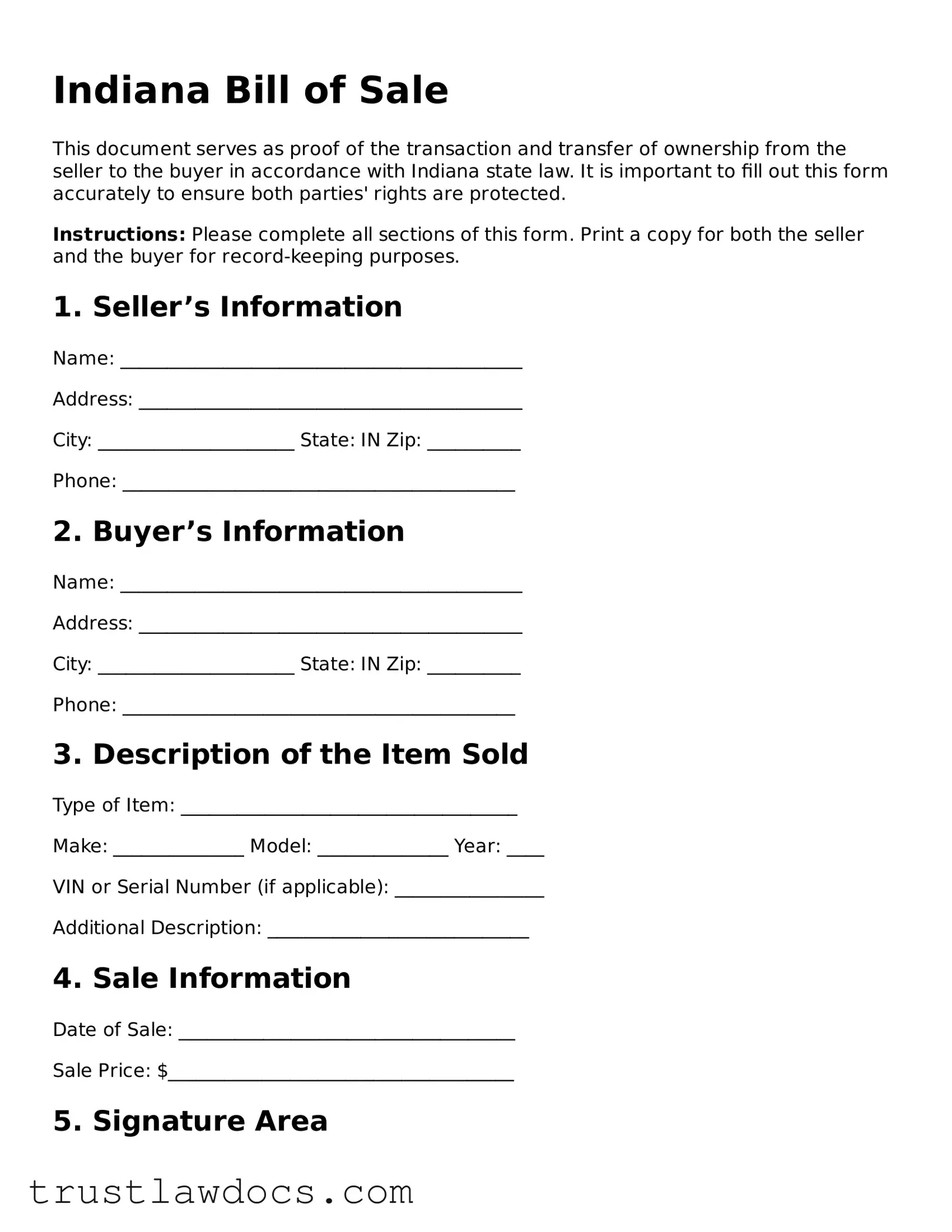What is an Indiana Bill of Sale form?
An Indiana Bill of Sale form is a legal document that records a transaction between two parties within the state of Indiana. It provides evidence that personal property has been legally transferred from one person to another. The form typically includes details about the item sold, the sale price, and the names and signatures of both the buyer and the seller.
Is an Indiana Bill of Sale form required for all sales?
While not all sales in Indiana require a bill of sale, having one is highly recommended for the legal protection it offers. It is especially important for private sales of vehicles, boats, and firearms, where it may also be required for registration or licensing purposes.
What information should be included in an Indiana Bill of Sale?
The form should include the date of the sale, a detailed description of the item being sold (including make, model, year, and serial number, if applicable), the sale price, and the names and addresses of the buyer and seller. It should also include the signatures of both parties and, optionally, a witness or notary public for added legal validity.
Does an Indiana Bill of Sale need to be notarized?
Notarization is not a requirement for a bill of sale to be legal in Indiana. However, getting the document notarized can add an extra layer of authenticity and may help protect against any future disputes.
Who should keep a copy of the Indiana Bill of Sale?
Both the buyer and the seller should keep a copy of the bill of sale. This document serves as a receipt for the buyer and as proof of release of liability for the seller, in case any issues or disputes arise after the sale.
How is an Indiana Bill of Sale used in selling a vehicle?
For selling a vehicle, the bill of sale should include the vehicle’s make, model, year, vehicle identification number (VIN), and odometer reading at the time of sale. It acts as a proof of purchase and is often required by the Bureau of Motor Vehicles (BMV) for the new owner to complete the title transfer and vehicle registration.
Can an Indiana Bill of Sale be used for selling other types of property?
Yes, a bill of sale can be used for transactions involving a wide range of personal property in Indiana, including boats, motorcycles, firearms, and general items like furniture or electronics.
What if the item is given as a gift? Is an Indiana Bill of Sale still necessary?
While it is not required, creating a bill of sale even for items given as a gift can be beneficial. It should state that the item was gifted and list a sale price of $0, providing documentation that can be useful for tax purposes or to prove ownership.
Are there any specific forms I need to use?
Indiana does not mandate a specific form for a bill of sale. However, it's important that all essential information is included in the document. Templates can be found online or through legal service providers, which can ensure that the bill of sale meets all legal criteria.
